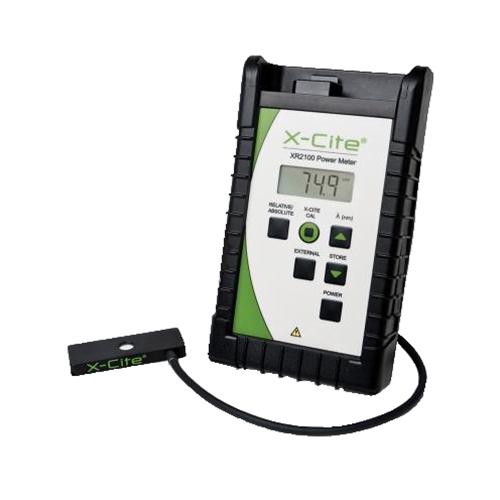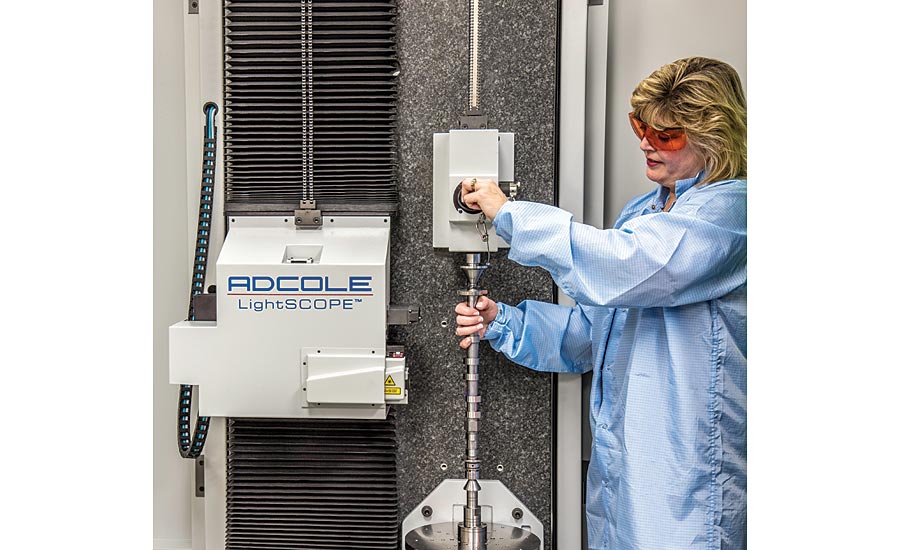The Role of Optical Dimension Solutions beforehand Width Strategies
Optical measurement systems have actually changed width, bringing a degree of precision that was when unthinkable. As you check out even more, you'll find exactly how these systems are forming the future of dimension and quality control.
The Evolution of Width: A Historical Viewpoint
As you discover the background of assessment, you'll find that its advancement reflects humankind's quest for accuracy and standardization. From old worlds using body parts as units of measurement to the development of standard weights and steps, each step shows our wish for precision. The Egyptians built the pyramids utilizing exact dimensions, while the Romans advanced engineering with their advanced measuring tools.
Throughout the Renaissance, scientific developments shifted the emphasis towards a lot more empirical approaches, leading the way for contemporary width. The intro of the metric system in the late 18th century marked a significant milestone, developing global standards. Throughout the 20th century, technological advancements better changed metrology, enabling very accurate measurements in different fields.
Today, width proceeds to evolve, incorporating electronic modern technology and automation. This background highlights not simply the significance of dimension yet likewise our ruthless pursuit of improving precision and uniformity in our increasingly complicated globe.
Concepts of Optical Measurement Equipments
Recognizing the principles behind optical dimension systems is essential for precise results in width. You'll wish to take into account fundamental optical principles, dimension accuracy elements, and efficient system calibration techniques. Each of these components plays an essential function in guaranteeing your measurements are exact and reliable.
Essential Optical Principles
While checking out optical dimension systems, you'll encounter basic optical concepts that develop the foundation of accurate information purchase. Light acts in foreseeable methods, and understanding these actions-- like diffraction, representation, and refraction-- is necessary for reliable dimensions. You'll make use of lenses and mirrors to adjust light and focus it onto your target, making sure precision in your readings. Additionally, the wave nature of light enables interference patterns, which can improve dimension resolution. Polarization can also play a vital role in distinguishing signal from noise, boosting the quality of your outcomes. By grasping these concepts, you'll be geared up to take advantage of optical modern technologies properly, leading the way for developments in metrology and guaranteeing your dimensions are both reliable and repeatable.
Dimension Precision Factors
To attain high measurement accuracy in optical systems, several elements enter play, influencing the dependability of your outcomes. The top quality of the optical components matters considerably. Top notch lenses and detectors minimize aberrations and sound, guaranteeing your measurements are precise. Second, environmental problems like temperature level and moisture can influence dimensions, so keeping a stable setting is crucial. Third, the alignment of the optical system is vital; even small imbalances can result in significant mistakes. Ultimately, the wavelength of light made use of impacts the resolution and precision of your dimensions. By attending to these elements, you can boost the total efficiency of your optical measurement systems, resulting in more reputable and precise lead to your width applications.
System Calibration Methods
Accomplishing high dimension precision is just part of the equation; correct system calibration strategies are similarly important in optical dimension systems. To ensure your system provides trusted outcomes, you ought to regularly calibrate it utilizing standard recommendation materials. Start by readjusting the optical elements, like lenses and mirrors, to lessen methodical mistakes. Next, utilize known dimensions to validate the system's output and make required adjustments. It's also essential to represent environmental factors-- temperature and humidity can impact measurements. Execute a regular calibration schedule to maintain consistency gradually. Document all calibration procedures and outcomes; this will help you track performance and resolve any drift in precision. With these strategies, you'll boost the dependability of your optical measurement system.
Trick Technologies Behind Optical Dimension
Optical dimension systems rely on a number of vital innovations that boost accuracy and effectiveness in width. One necessary innovation is interferometry, which uses the disturbance of light waves to measure small variations and surface area abnormalities with extreme accuracy. You'll additionally find laser scanning systems, which catch thorough 3D data of things quickly, making them very useful for dimensional analysis.
Additionally, CCD and CMOS sensors play a substantial role in converting light into electric signals, permitting high-resolution imaging and precise measurements. Advanced formulas for image processing further boost dimension precision by assessing information in actual time, filtering out noise and boosting attributes.
Ultimately, fiber optics supply adaptability and the ability to measure in challenging settings while maintaining signal honesty. By leveraging these technologies, you can attain premium outcomes in your assessment jobs, guaranteeing that your measurements are both dependable and precise.
Applications of Optical Measurement in Sector
As markets significantly demand accuracy and effectiveness, the applications of optical measurement systems have actually come to be essential throughout different sectors. In manufacturing, these systems aid you keep track of dimensions and tolerances in real-time, ensuring quality assurance without lengthy hands-on checks. In the automotive market, optical measurements aid in aligning components with accuracy, boosting safety and efficiency.
In electronics, you're making use of optical techniques to examine minute features on circuit boards, discovering issues that might lead to failings. The aerospace field take advantage of non-destructive testing techniques, allowing you to assess materials and elements without compromising their integrity.
Optical dimension additionally plays a crucial role in fabrics, making certain fabric measurements fulfill precise specifications. optical measurement system. With their ability to offer high-resolution information quickly, these systems empower you to make educated choices, enhance processes, and eventually drive technology across your sector
Enhancing Accuracy and Efficiency in Dimensions
When you assume concerning enhancing accuracy in dimensions, precision in your measurement strategies is important. By streamlining these procedures, you can accomplish quicker results without sacrificing quality. Let's check out how embracing innovative optical measurement systems can raise both accuracy and effectiveness in your work.
Accuracy in Measurement Strategies
Precision in dimension methods is vital for attaining reliable outcomes in metrology, particularly considering that tiny discrepancies can lead to considerable errors. By using advanced optical dimension systems, you can improve the precision of your dimensions. In enhancement, specific dimensions enable you to preserve quality control, guaranteeing that products fulfill rigorous specs.
Improving Measurement Procedures
To enhance precision and efficiency in dimensions, enhancing your dimension processes is crucial. Start by taking on optical measurement systems that offer real-time data, minimizing the time spent on hands-on recording. These systems often integrate perfectly with existing software program, allowing you to automate data collection and analysis.
Next, systematize your measurement methods. By carrying out regular procedures, you reduce variability and enhance repeatability. Don't fail to remember to regularly adjust your equipment to ensure its precision.

The Influence of Optical Dimension on Study and Growth
As researchers endeavor This Site to press the limits of innovation, optical measurement systems have actually ended up being vital tools in the growth procedure. These systems provide you with specific, real-time data that enhances your capability to evaluate complex products and structures. In different fields, from biotechnology to aerospace, you count on optical dimensions to boost and optimize layouts product performance.

With high-resolution imaging and non-contact methods, you can lessen sample disturbance, permitting even more precise outcomes. This ability to catch minute information accelerates your R&D cycle, letting you iterate styles promptly and successfully. Optical measurement promotes collaboration across techniques, as the information generated is frequently easily interpretable and shareable.
Eventually, integrating optical measurement systems into your research study not just improves performance however also strengthens your understanding of the sensations you study. By leveraging these innovative techniques, you're far better equipped to introduce and remain in advance in an affordable landscape.
Future Patterns in Optical Dimension Equipments
With the rapid see it here improvement of modern technology, you're likely to see considerable changes in optical measurement systems that will certainly redefine their application throughout different markets. You'll see a move toward boosted automation and combination of synthetic intelligence, enabling real-time data evaluation and enhanced precision. Miniaturization is an additional fad; portable tools will make it possible for dimensions in tighter rooms, making them excellent for areas like aerospace and biomedical applications.
Furthermore, the arrival of innovative materials, such as photonic crystals, will certainly enhance sensitivity and resolution. Expect to see systems that can run in difficult atmospheres, supplying reliable dimensions in extreme problems. Cloud-based analytics will certainly likewise play an essential role, using you accessibility to big datasets for better decision-making. As these technologies assemble, you'll find that optical measurement systems not just enhance accuracy however likewise enhance workflows, ultimately driving development and efficiency in your jobs.
Regularly Asked Inquiries
Just How Do Optical Dimension Solutions Compare to Standard Dimension Techniques?
Optical measurement systems offer higher accuracy and faster results compared to traditional methods. You'll locate they capture even more data factors properly, decreasing human mistake and increasing integrity, making them a recommended choice in various applications.
What Industries Advantage The Majority Of From Optical Dimension Solutions?
You'll discover sectors like aerospace, automobile, and electronics benefit most from optical measurement systems. These fields rely upon accurate dimensions to guarantee high quality and efficiency, boosting effectiveness and lowering costs via advanced technology.

Are Optical Measurement Equipments Expensive to Apply?
Optical dimension systems can be pricey to carry out, however their precision and effectiveness usually validate the expense. Buying such innovation can result in substantial long-term savings and renovations in high quality across numerous applications.
What Skills Are Required to Run Optical Measurement Equipments?
To operate optical measurement systems, you'll require solid logical skills, attention to information, and efficiency in software program tools. Knowledge with optics and an understanding of measurement principles will certainly additionally enhance your efficiency and efficiency.
Just How Do Ecological Aspects Impact Optical Measurements?
Ecological aspects like air, moisture, and temperature level quality can misshape optical measurements. You'll discover variants in accuracy because of light disturbance or refraction. optical measurement. Maintaining stable problems is crucial for reputable and precise optical dimension results
Conclusion
In recap, optical dimension systems are changing metrology by providing unrivaled accuracy and efficiency. As you discover future trends, you'll see exactly how the integration of AI and automation will certainly continue to elevate measurement methods, driving technology and improving quality control.
Attaining high measurement precision is only component of the formula; correct system calibration strategies are just as essential in optical measurement systems.When you assume about improving accuracy in measurements, precision in your measurement techniques is crucial. By using advanced optical measurement systems, you can improve the precision of your measurements.To enhance accuracy and efficiency in measurements, why not try this out simplifying your dimension processes is crucial. How Do Optical Dimension Solutions Compare to Typical Measurement Techniques?